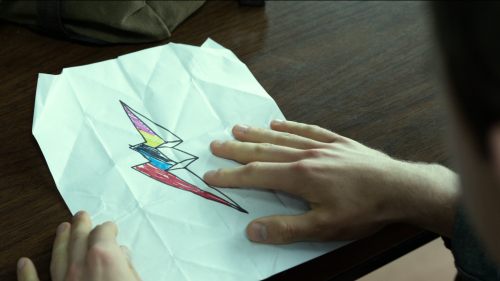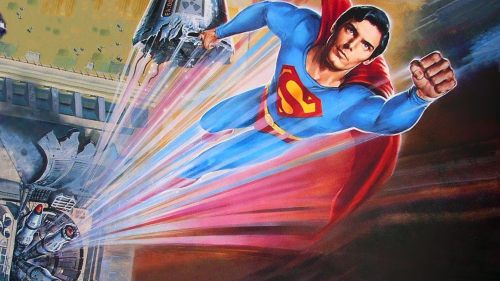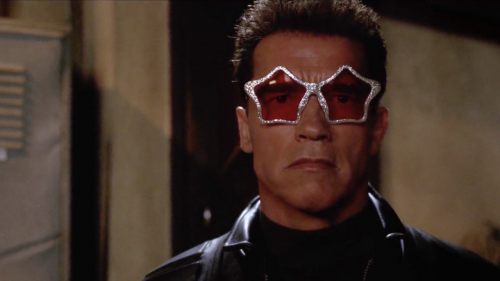Say Something Nice: THE LEAGUE OF EXTRAORDINARY GENTLEMEN
On the page, Alan Moore and Kevin O'Neill’s comic book series The League Of Extraordinary Gentlemen, currently publishing its final issues before its creators retire, is a glorious intertextual romp, combining characters from history, fiction and legend in a rigorously-constructed alternative history which aims to encompass no less than the entire cultural and intellectual output of human civilisation, and thus rewards close reading and further study.
The movie it spawned in 2003... not so much. The alt-19th century setting remains along with the diverse literary characters who form the League, but the movie can’t find a way to make them engaging other than casting Sean Connery and the script’s rote efforts to provide sympathetic backstories. Maybe the dedicated fans of the comic were thrilled to see these characters come to life, but was anyone excited at the prospect of seeing Tom Sawyer as a Secret Service agent? Throw in CGI frequently so atrocious that the cityscapes jiggle in a dance of broken parallax, and a generic, borderline unfathomable plot in which the villain targets characters we never meet, let alone care about, and it’s surprising to find the movie did respectably at the box office. Not enough to convince anyone involved that a second installment was worth their while, however.
It’s small recompense, but one surprising thing The League Of Extraordinary Gentlemen does get absolutely right is its casting of an Indian actor, Naseeruddin Shah, in the role of Captain Nemo. Author Jules Verne conceived of Nemo as the Indian Prince Dakkar of Bundelkhand, but an authentic depiction of the character has been largely absent, making him possibly the most whitewashed in cinema.
Ironically, early in his conception the character had already made the reverse journey: an early draft of 1869’s 20,000 Leagues Under The Sea cast Nemo as a Polish noble avenging the destruction of his family by Tsarist Russia, but Verne’s editor feared this would cause a backlash among the powerful Parisian Russian set, an early example of complaints about authors inserting politics into their scientific romances. After some heated correspondence Verne relented and the novel as published leaves Nemo’s origins and purpose almost entirely opaque, his appearance ambiguous. When revisiting the character in 1874 for The Mysterious Island Verne re-conceived Nemo’s backstory, made his ethnicity explicit and elaborated on his motivations. It was now the loss of his kingdom and family under the thumb of the British Empire which caused Prince Dakkar to reject the dominion of the landbound and master the seas, establishing a domain of his own from which to exact revenge upon warmongering imperialists, symbolically adopting the name Nemo, Latin for “no body”.
None of this retconning contradicts 20,000 Leagues Under The Sea, and the publication of the novels so comfortably predates the invention of moving pictures there’s no reason it shouldn’t be the default cinematic depiction. Indeed, the first, loose, adaptation of the story from 1916 portrays Nemo as Indian, albeit by putting brownface on actor Allen Holubar, first in a steady stream of white guys to take the helm of the Nautilus. Of these, James Mason in the 1954 Disney version is certainly the best-known, if not definitive, depiction of Captain Nemo in popular culture, with only Egyptian Omar Sharif and Puerto Rican José Ferrer offering more diverse portrayals prior to Shah.
This isn’t to say The League Of Extraordinary Gentlemen is some incredible milestone for representation: its Captain Nemo is no better-developed than any of its other characters, and by no means the lead. However, he is accorded great respect and, being the tech genius with all the toys, is essential to the completion of the story’s mission. Furthermore, in taking design cues from traditional Hindu architecture and ornamentation rather than the default steampunk brass and leather, his car and his Nautilus exemplify a movie visually enriched by drawing from a broader cultural palette.
As we’ve seen this year with Black Panther and Crazy Rich Asians, audiences of colour are hungry to see themselves represented on the screen, demonstrating that beyond making diversity more familiar, positive representation also delivers at the box office. Should Disney’s mooted remake of 20,000 Leagues Under The Sea ever surface from development hell there’s a greater chance now than ever of its Captain Nemo being an Indian character played by an Indian actor, inspiring its own generation of under-represented audiences. Anyone doubting this would work need only look at The League Of Extraordinary Gentlemen’s Captain Nemo as played by Naseeruddin Shah.



